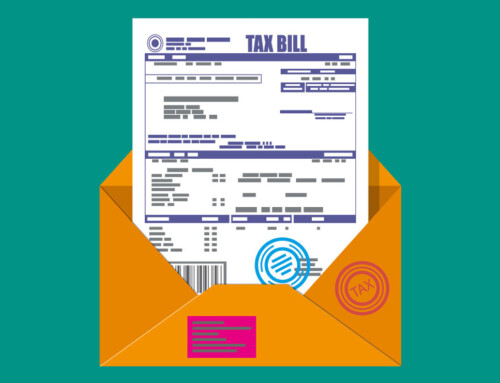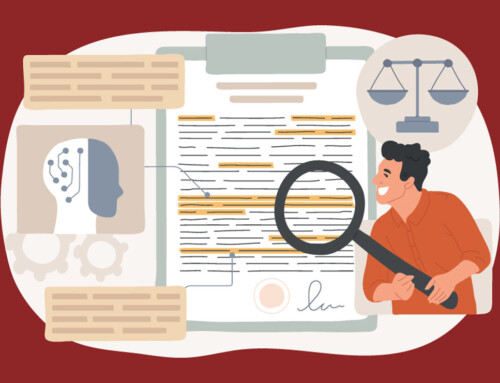Contents
Writing an Effective Personal Injury Demand Letter: Key Strategies and Essential Elements
A Personal Injury Demand Letter is a formal written request sent by an injured party (or their legal representative) to the insurance company or individual responsible for causing the injury. Before proceeding to court, the injured party sends a demand letter for personal injury to the responsible driver’s insurance company, outlining the damages and requesting a fair settlement. This letter details the injury, the events that caused it, and the compensation requested for the resulting damages.
Purpose of a Personal Injury Demand Letter
A personal injury demand letter serves several critical purposes in the context of a personal injury claim:
- Initiates Negotiations: The demand letter formally initiates the negotiation process with the insurance company or the responsible party. It is the first step towards reaching a settlement without going to court.
- Details the Claim: The letter outlines the specifics of the injury, including how the accident occurred, the nature and extent of the injuries, medical treatments received, and the impact on the victim’s life. This detailed account helps the opposing party understand the claim’s basis.
- Specifies Compensation: The demand letter includes a specific dollar amount that the injured party is seeking in compensation. This figure is based on medical expenses, lost wages, pain and suffering, and other related costs.
- Provides Documentation: Accompanying the demand letter are usually copies of medical records, bills, receipts, and any other relevant documentation that supports the claim. This evidence strengthens the case and substantiates the compensation amount requested.
- Sets the Tone: The tone and content of the demand letter can set the stage for the ensuing negotiations. A well-crafted letter that clearly presents the facts and the legal basis for the claim can lead to a more favorable and swift settlement.
- Encourages Settlement: By presenting a comprehensive and compelling argument, the demand letter encourages the insurance company or the responsible party to settle the claim rather than face the uncertainty and expense of a lawsuit.
- Establishes Record: The demand letter creates a formal record of the claim and the injured party’s intent to seek compensation. This can be important if the case eventually goes to court, as it shows that the injured party made a good-faith effort to resolve the matter amicably.
Calculating Damages: Medical Expenses, Lost Wages, and Pain and Suffering
Calculating damages in a demand letter for personal injury involves providing detailed documentation and justification for each category of damages: medical expenses, lost wages, and pain and suffering. Here is how each type of damage is typically calculated and presented in the letter:
Medical Expenses
Medical expenses cover all costs associated with the injury, including immediate and future medical care.
- Collect all medical bills, receipts, and statements from healthcare providers. Include costs for hospital stays, surgeries, doctor visits, physical therapy, medications, and any other related treatments.
- Create an itemized list of all medical expenses. This list should include the date of each service, the type of service received, the provider, and the cost.
- If ongoing or future medical treatment is required, include an estimate of these costs. Obtain a statement from a medical professional outlining the necessity and anticipated cost of future treatments.
Lost Wages
Lost wages refer to the income the claimant could not earn due to the injury.
- Obtain a letter from the employer verifying the claimant’s position, salary, and the time missed from work due to the injury.
- Calculate the total lost income by multiplying the number of days missed by the daily wage. If the claimant is unable to return to work in the same capacity, consider loss of earning capacity.
- If the claimant is self-employed or has irregular income, use previous tax returns or bank statements to demonstrate average earnings.

Pain and Suffering
Pain and suffering compensation covers the non-economic damages such as physical pain, emotional distress, and loss of enjoyment of life.
- Document the severity and duration of the pain and suffering. Use medical records and personal statements to illustrate the impact.
- One common method is the multiplier method, where medical expenses are multiplied by a number (usually between 1.5 and 5) based on the severity of the injury.
- Another method is the per diem (daily rate) approach, assigning a daily rate to the pain and suffering and multiplying it by the number of days the claimant is affected.
Common Mistakes to Avoid in a Demand Letter
Drafting a personal injury demand letter requires careful attention to detail and a strategic approach. Here are some common mistakes to avoid to ensure the letter is effective and compelling:
Lack of Specificity
One of the most common mistakes is failing to provide specific details about the incident, injuries, and damages. Vague descriptions can weaken the claim and make it difficult for the recipient to understand the full extent of the damages. Always include detailed accounts of the incident, comprehensive medical information, and precise calculations of all losses.
Inadequate Documentation
Not including sufficient evidence to support the claim is another major error. This includes omitting medical records, bills, receipts, employment verification, and other relevant documents. Each assertion made in the letter should be backed up with appropriate documentation to substantiate the claim.
Unrealistic Compensation Amounts
Demanding an unreasonably high amount of compensation without a clear basis can undermine the credibility of the letter. The compensation requested should be justified with detailed calculations and a clear rationale. Unrealistic demands can lead to prolonged negotiations or outright rejection.
Emotional Language
While it is important to convey the impact of the injury, using overly emotional or aggressive language can detract from the professionalism of the letter. Stick to factual, clear, and respectful language to maintain a professional tone and ensure the letter is taken seriously.
Ignoring the Statute of Limitations
Failing to send the demand letter within the applicable statute of limitations can result in the loss of the right to seek compensation. Be aware of the legal deadlines and ensure the letter is sent well before the statute of limitations expires.
Overlooking Future Damages
Only accounting for immediate costs and neglecting future damages, such as ongoing medical treatment or long-term loss of earnings, can result in inadequate compensation. Include estimates for future expenses and provide supporting documentation from medical professionals if possible.
Failure to Address Liability
Not clearly explaining why the recipient is liable for the damages can weaken the claim. The letter should outline the legal basis for the claim, referencing relevant laws or regulations that support the claimant’s position.
Inconsistent Information
Providing inconsistent or contradictory information can undermine the credibility of the claim. Ensure that all details in the demand letter are accurate and consistent with the supporting documentation and any prior statements made regarding the incident.
Ignoring Precedents and Similar Cases
Failing to consider similar cases and legal precedents can result in unrealistic demands or strategies. Researching and referencing relevant case law or settlements can help to justify the compensation amount and strengthen the claim.
Lack of a Clear Call to Action
The demand letter should clearly state the specific action being requested, such as a response within a certain timeframe. Not providing a clear call to action can lead to delays or misunderstandings about the next steps.
Avoiding these common mistakes can significantly enhance the effectiveness of a personal injury demand letter. By providing detailed, well-documented, and professionally presented information, and by setting realistic and justified compensation amounts, the letter is more likely to achieve a favorable response and facilitate a fair settlement.
The Role of an Attorney in Drafting a Demand Letter
An attorney plays a crucial role in drafting a personal injury demand letter, leveraging their legal expertise to create a compelling case for compensation. Their understanding of legal principles and requirements ensures that the demand letter adheres to legal standards and effectively communicates the claimant’s rights and the basis for the claim. Attorneys are skilled in accurately calculating various types of damages, including medical expenses, lost wages, and pain and suffering. They draw on their experience with similar cases to estimate fair compensation amounts, considering both current and future expenses.
Additionally, attorneys help gather and organize all necessary documentation to support the claim, such as medical records, bills, employment records, and other evidence that substantiates the damages and the impact of the injury. Their ability to draft clear, concise, and persuasive letters effectively presents the facts of the case, articulates the legal basis for the claim, and justifies the compensation amount being sought. This clarity and persuasiveness can significantly influence the recipient’s response.
An attorney also anticipates potential defenses or counterarguments from the insurance company or responsible party, addressing these points preemptively in the demand letter to strengthen the claimant’s position and reduce the likelihood of disputes. The professional tone and structure provided by attorneys reflect the seriousness of the claim and can foster a more respectful and constructive dialogue with the opposing party.
Moreover, attorneys integrate the demand letter into a broader legal strategy, planning the next steps in case the demand is not met, such as preparing for negotiation or litigation. Their experience in negotiating settlements ensures that the claimant’s interests are effectively represented. They also ensure that the demand letter is sent within specific deadlines, known as statutes of limitations, preserving the claimant’s right to seek compensation.
By handling the preparation and drafting of the demand letter, an attorney reduces the burden and stress on the claimant, allowing the injured party to focus on recovery while knowing that their legal interests are being protected. The involvement of an attorney significantly enhances the quality and effectiveness of the demand letter, increasing the likelihood of achieving a favorable settlement and navigating the complexities of personal injury law.
Legal Considerations and Statutes of Limitations
When pursuing a personal injury claim, understanding the legal considerations and statutes of limitations is essential to protect your rights and maximize the chances of a successful outcome.
Establishing Liability
- Negligence: To succeed in a personal injury claim, you must prove that the other party was negligent. This involves showing that they had a duty of care, breached that duty, and caused your injury as a result.
- Comparative Fault: In some jurisdictions, the concept of comparative fault or contributory negligence may apply. This means that if you are partially at fault for your injury, your compensation may be reduced proportionately.
- Strict Liability: In cases involving defective products or certain activities, strict liability may apply, meaning you do not need to prove negligence, only that the product or activity caused the injury.
Damages
- Economic Damages: These include tangible costs such as medical expenses, lost wages, and property damage. Accurately documenting and calculating these costs is crucial.
- Non-Economic Damages: These cover intangible losses such as pain and suffering, emotional distress, and loss of enjoyment of life. Estimating these damages requires a careful and often subjective approach.
- Punitive Damages: In some cases, punitive damages may be awarded to punish the defendant for particularly egregious conduct. These are less common and usually require clear and convincing evidence of malicious intent or gross negligence.
Insurance Considerations
- Policy Limits: Be aware of the at-fault party’s insurance policy limits, as this can impact the amount of compensation available.
- Uninsured/Underinsured Coverage: If the at-fault party lacks sufficient insurance, your own uninsured/underinsured motorist coverage may provide additional compensation.
Statutes of Limitations
Typically, the statute of limitations for general personal injury claims ranges from one to three years from the date of injury. For medical malpractice claims, the period is often shorter, usually around two years from the date the injury is discovered. Product liability claims can vary, generally falling within a range of two to four years. For wrongful death claims, the statute of limitations is usually around two years from the date of death.
Understanding the legal considerations and statutes of limitations is vital in personal injury claims. Establishing liability, accurately calculating damages, and navigating insurance complexities require careful attention. Equally important is being aware of and adhering to the relevant statute of limitations to preserve your right to compensation.
Disclaimer: The content provided on this blog is for informational purposes only and does not constitute legal, financial, or professional advice.







